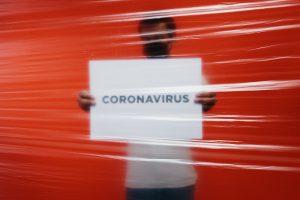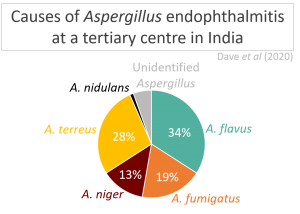Submitted by Aspergillus Administrator on 3 October 2012
Reproduced from ISHAM publication:
On 12 and 13 April, 2012 the CBS Spring Symposium was held in Amsterdam, The Netherlands and was devoted to fungal nomenclature. It was entitled “One Fungus = Which Name”, being an extension of the 2011 workshop “One Fungus = One Name”. These symposia will have a strong impact on nomenclature of medically significant fungi, and therefore it is important that we as ISHAM implement a democratic procedure to achieve a stable result which will be adopted quickly by the entire community. Your cooperation and input is therefore explicitly requested.
In essence, changes involve the abolishment of Art. 59 of the Code of Nomenclature, which previously allowed separate names for sexual stages and different asexual stages of one and the same fungus. From 1 January 2013 onwards this will no longer be allowed. The question now is which name of polymorphic fungi has priority and should be used in the future. Nomenclature has always been a very formal process on the basis of strict rules in the Code of Nomenclature, but with the Amsterdam symposia there was a consensus for a much more practical approach, taking the needs of the user as a starting point.
This has led to some suggestions outlined below.
Concerning name changes of pleomorphic fungi:
- We, the community of medical mycologists, first have to decide which names we want to keep above all doubt. For example: Candida albicans and Aspergillus fumigatus should be maintained,and we wish to use Trichophyton rather than Arthroderma. Probably there are many other classical pathogens and opportunists that we wish to keep. This list of names can be proposed for conservation.
- An important criterion for choice of a name will be how frequently names have been used. But“commonly used” is an unclear criterion; for each of the names the reasons for proposed conservation should be specified. For example: how to establish whether Scedosporium is more current than Pseudallescheria?
- If no single name is strongly favoured, the oldest name (anamorph or teleomorph) has priority. For example: names of Aspergillus are older than Neosartorya, and therefore the Neosartorya species will be Aspergillus in the future.
Concerning name changes due to reclassifications of fungi:
- Taxonomic methods are not regulated by the Code, so these may be classical phenotypic, or molecular phylogenetic. Phylogenetic criterion of a group (“genus”) is the monophyletic clade. The clade determines the genus name. Preferably the oldest name available for that group is used, see the example of Aspergillus.
- New molecular taxonomy may reveal groups where all experts agree that they are clearly monophyletic and may share essential characteristics such as pathogenicity or antifungal susceptibility. This may be the case in the yeasts.
- But there are also groups where so many new data – often of environmental relatives – are added, that the phylogeny is highly unstable. For example, black yeast taxonomy develops rapidly. We may propose that for the time being we just leave the names as they are, even if form-genera are polyphyletic.
- Ancient, poorly differentiated genera, such as Acremonium today may be highly polyphyletic, and thus have become ambiguous. There was a proposal to abandon such genera at all, but an alternative option would be to redefine them in a modern sense on the basis of accessible type material.
What’s next
The community of medical mycologists including the ISHAM membership is requested to propose lists of preferred on the basis of the above criteria. Many fungal pathogens have an ancient history and have become source of confusion over the years. We therefore urge taxonomists, if necessary, to (re)define the groups of fungi they are working with by the deposition of (new) type material; the procedures are> outlined in the Code of Nomenclature. (http://ibot.sav.sk/icbn/main.htm).
Proposals for preferred names will be submitted to the International Commission of the Taxonomy of Fungi (ICTF, http://www.iums.org/ICTF) for approval. An ad hoc commission (below) will provide a list of fungal names in current use based on the Atlas of Clinical Fungi for the ISHAM membership to send any kind of comments to de.hoog@cbs.knaw.nl.
We hope to have active involvement of many medical mycologists.
Best regards,
Sybren de Hoog, Vishnu Chaturvedi (reporters)
Teun Boekhout, Walter Buzina, Heide-Marie Daniel, Marizeth Groenewald, Wieland Meyer, Richard
Summerbell
News archives
-
Title
Date



